| Resident Commissioner of the Philippine Islands | |
|---|---|
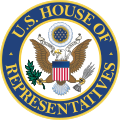 | |
 Carlos P. Romulo Carlos P. RomuloLast Resident Commissioner of the Philippines | |
| United States House of Representatives | |
| Seat | Philippines |
| Formation | November 22, 1907 |
| First holder | Benito Legarda Pablo Ocampo |
| Final holder | Carlos P. Romulo |
| Abolished | July 4, 1946 |
The Resident Commissioner of the Philippine Islands to the United States (Spanish: Comisario Residente de las Islas Filipinas a Estados Unidos) was a non-voting member of the United States House of Representatives sent by the Philippines from 1907 until its internationally recognized independence in 1946. It was similar to current non-voting members of Congress such as the resident commissioner of Puerto Rico and delegates from Washington, D.C., Guam, the Northern Mariana Islands and other territories of the United States.
Like current non-voting members, resident commissioners could speak and otherwise participate in the business of the House, but did not have full voting rights. Two resident commissioners were sent until 1937, when after the establishment of the Commonwealth of the Philippines, the number was changed to one.
History

The Philippines was a United States territory from 13 August 1898 until Philippine independence was internationally recognized on 4 July 1946.
The office was first created by the Philippine Organic Act of 1902, section 8 and re-authorized on its subsequent replacements—the Jones Law of 1916 (known as the Philippine Autonomy Act) section 20, and the Tydings–McDuffie Act of 1934 (known as the Philippine Independence Act) section 7(5).
Election
The procedures for appointment of the resident commissioners were ambiguous and a source of friction. Under the Philippine Organic Act of 1902, the two resident commissioners were to be elected by the Philippine Legislature, with each chamber (the entirely-appointed, American-majority Philippine Commission and the fully-elected and all-Filipino Philippine Assembly) voting separately. The resident commissioners were to be elected biennially from the time of the first meeting of the Philippine Legislature in 1907. Benito Legarda and Pablo Ocampo became the first two resident commissioners.
Upon the passage of the Jones Law in 1916, the resident commissioners were still selected in the same way, but by this time now had three-year terms. Jaime C. de Veyra and Teodoro R. Yangco were the first resident commissioners under the Jones Law.
The Tydings–McDuffie Act of 1934 reduced the number of resident commissioners to one, and ordered the enactment of a new constitution. Upon the passage of the 1935 Constitution, it tasked the National Assembly (the successor of the Philippine Legislature) to legislate how the resident commissioner shall be selected. The National Assembly enacted Commonwealth Act No. 10 late in 1935, which stated how the next resident commissioner shall be selected; it stated that the resident commissioner would now be appointed by the president of the Commonwealth of the Philippines with the consent of the Commission on Appointments. and that the resident commissioner holds office at the pleasure of the president, therefore there was no fixed term.
The two resident commissioners serving under the Jones Law, Pedro Guevara and Francisco Afan Delgado, were replaced when President Manuel L. Quezon appointed Quintin Paredes as their successor in February 1936.
The resident commissioner was never elected via direct election. unlike its Puerto Rican counterpart.
List of resident commissioners
Insular government era: 1907–1936
Main article: Insular Government of the Philippine Islands| Seat A | Years | U.S. Congress | Philippine Legislature | Seat B | ||||
|---|---|---|---|---|---|---|---|---|
| Resident commissioner | Party | Electoral history | Resident commissioner | Party | Electoral history | |||
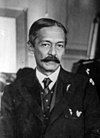 Benito Legarda (Manila) |
Federalista (Republican) |
Elected in 1907. Re-elected in 1909. Retired in 1912. |
November 22, 1907 – March 3, 1909 | 60th | 1st |  Pablo Ocampo (Manila) |
Democratic | Elected in 1907. Retired in 1909 to run in the Philippine Assembly. |
| March 4, 1909 – November 22, 1909 | 61st | |||||||
| 2nd | ||||||||
| November 23, 1909 – March 3, 1912 | 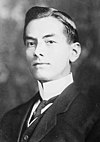 Manuel L. Quezon (Tayabas) |
Nacionalista | Elected in 1909. Re-elected in 1912. Retired in 1916 to run in the Philippine Senate. | |||||
| 62nd | ||||||||
| March 4, 1912 – March 3, 1913 | ||||||||
| Vacant | 3rd | |||||||
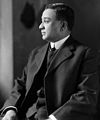 Manuel Earnshaw (Manila) |
Nonpartisan | Elected in 1913. Retired in 1916. |
March 4, 1913 – March 3, 1915 | 63rd | ||||
| March 4, 1915 – October 15, 1916 | 64th | |||||||
 Jaime C. de Veyra (Manila) |
Nacionalista | Elected in 1917. Re-elected in 1920. Retired in 1923. |
4th | |||||
| October 16, 1916 – March 3, 1917 | Vacant | |||||||
| March 4, 1917 – March 3, 1919 | 65th | 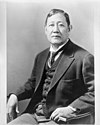 Teodoro R. Yangco (Zambales) |
Nonpartisan | Elected in 1917. Retired in 1920. | ||||
| March 4, 1919 – March 3, 1920 | 66th | |||||||
| 5th | 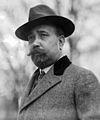 Isauro Gabaldón (Nueva Ecija) |
Nacionalista | Elected in 1920. Re-elected in 1923. Re-elected in 1926. Resigned in 1928 to run in the Philippine House of Representatives. | |||||
| March 4, 1920 – March 3, 1921 | ||||||||
| March 4, 1921 – March 3, 1923 | 67th | |||||||
| 6th | ||||||||
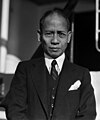 Pedro Guevara (Santa Cruz) |
Nacionalista | Elected in 1923. Re-elected in 1926. Re-elected in 1929. Re-elected in 1932. Retired in 1936 after change of form of government. |
March 4, 1923 – March 3, 1925 | 68th | ||||
| March 4, 1925 – March 3, 1927 | 69th | |||||||
| 7th | ||||||||
| March 4, 1927 – July 16, 1928 | 70th | |||||||
| July 16, 1928 – March 3, 1929 | 8th | Vacant | ||||||
| March 4, 1929 – March 3, 1931 | 71st | 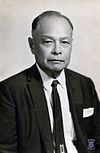 Camilo Osías (Balaoan) |
Nacionalista | Elected in 1929. Re-elected in 1932. Retired in 1934 to run in the Philippine Senate. | ||||
| March 4, 1931 – March 3, 1933 | 72nd | |||||||
| 9th | ||||||||
| March 4, 1933 – January 3, 1935 | 73rd | |||||||
| 10th | ||||||||
| January 3, 1935 – February 14, 1936 | 74th |  Francisco Afan Delgado (Bulacan) |
Nacionalista | Elected in 1934. Retired in 1936 after change of form of government. | ||||
Commonwealth era: 1936–1946
Main article: Commonwealth of the Philippines| Resident commissioner | Party | Years | U.S. Congress | Philippine president | Appointive history |
|---|---|---|---|---|---|
 Quintín Paredes (Bangued) |
Nacionalista | February 14, 1936 – September 29, 1938 | 74th 75th |
Manuel L. Quezon | Appointed in 1936. Resigned in 1938 to run in the Philippine National Assembly. |
 Joaquín Miguel Elizalde (Manila) |
Nonpartisan | September 29, 1938 – August 9, 1944 | 76th 77th 78th |
Appointed in 1938. Resigned in 1944. | |
| Sergio Osmeña | |||||
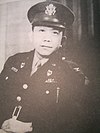 Carlos P. Romulo (Manila) |
Nacionalista (1944–1946) . |
August 10, 1944 – July 4, 1946 | 78th 79th |
Appointed in 1944. Office eliminated when the United States recognized the independence of the Republic of the Philippines in 1946. | |
| Liberal (1946) |
Philippines's at-large congressional district
| Philippines's at-large congressional district | |
|---|---|
| Obsolete district | |
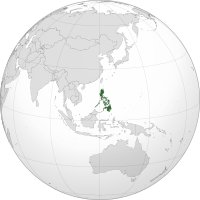 Location of the Philippines (dark green) in the Asia-Pacific region Location of the Philippines (dark green) in the Asia-Pacific region | |
| Created | 1907, as a Resident Commissioner was granted by Congress |
| Eliminated | 1946, as a result of independence of the Philippines |
| Years active | 1907–1946 |
The resident commissioner represented the Philippines in the United States Congress.
See also
- List of Asian Americans in the United States Congress
- List of Hispanic and Latino Americans in the United States Congress
- Resident Commissioner
- Representatives of the United States to the Philippines:
- Governor-General of the Philippines from 1900 to 1935
- High Commissioner to the Philippines from 1935 to 1946
- List of ambassadors of the United States to the Philippines from 1946 to the present
- List of ambassadors of the Philippines to the United States, representative of the Philippines to the United States
References
- Dorothy B. Fujita-Rony (2003). American Workers, Colonial Power. University of California Press. ISBN 0-520-23095-7.
- Kramer, Paul Alexander (2006). The Blood of Government: Race, Empire, the United States, & the Philippines. University of North Carolina Press. p. 325. ISBN 9780807856536.
External links
- "PI Resident Commissioner - History". www.ourcampaigns.com. Retrieved August 28, 2020.
- 1907 establishments in the Philippines
- 1907 establishments in the United States
- 1946 disestablishments in the Philippines
- 1946 disestablishments in the United States
- Members of the United States Congress of Filipino descent
- Defunct government positions in the Philippines
- Resident commissioners of the Philippines